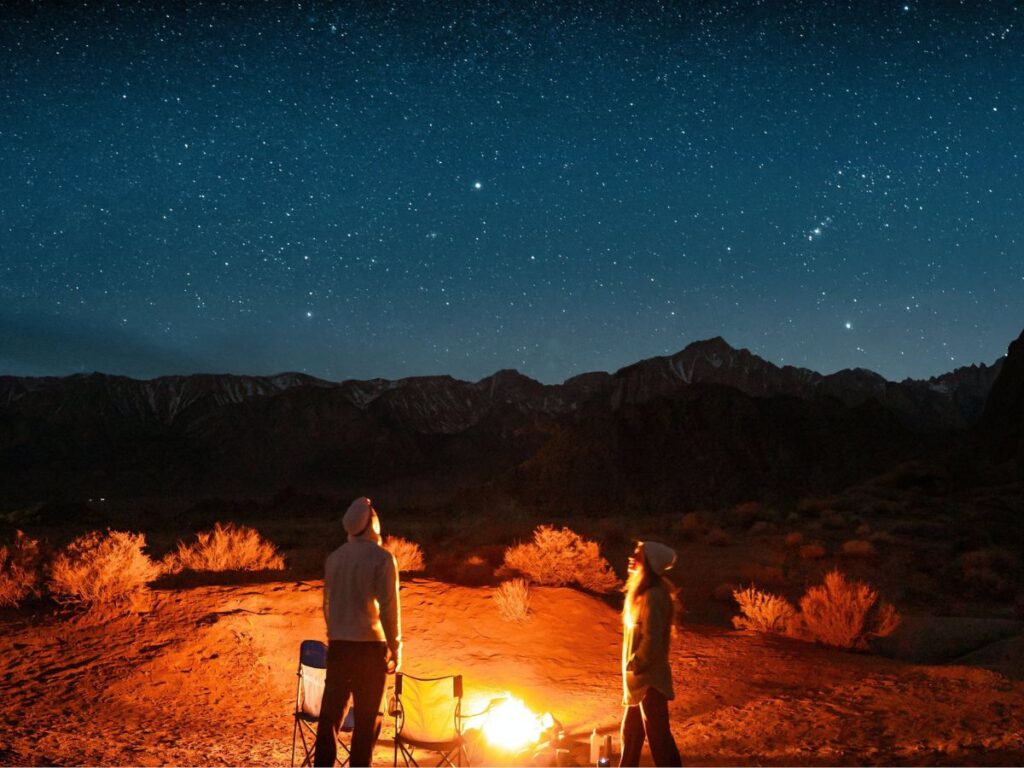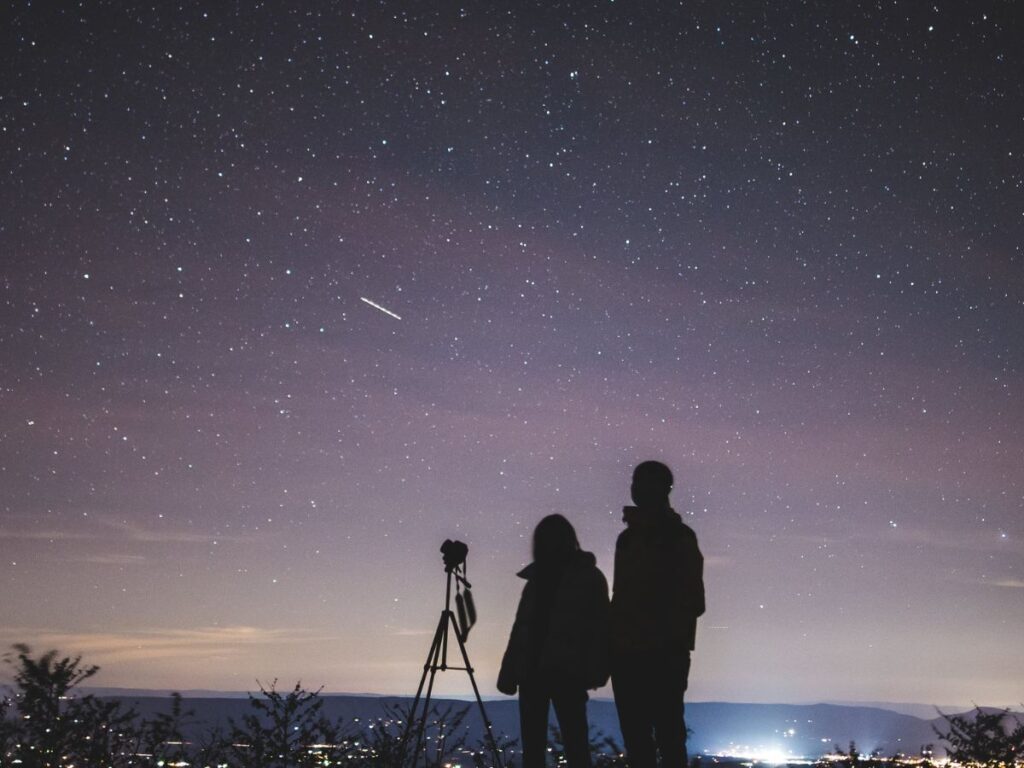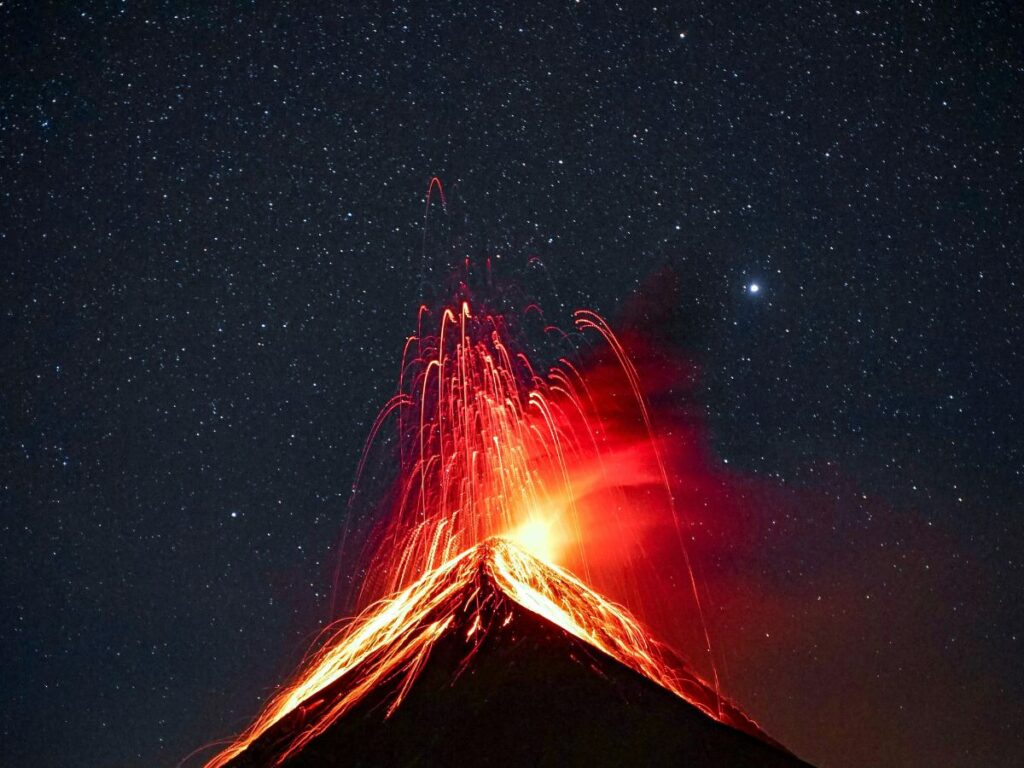Imagine standing beneath a vast sky ablaze with countless stars, feeling a sense of wonder and connection with the universe. Yosemite National Park, nestled amidst the breathtaking Sierra Nevada Mountains, offers a celestial spectacle that beckons stargazers from all walks of life. In this ultimate guide, we unveil the most remarkable spots for stargazing in Yosemite, revealing hidden gems and iconic locations that offer unparalleled views of the glittering cosmos.
Yosemite National Park is famed worldwide for its breathtaking beauty, ranging from towering granite cliffs to cascading waterfalls and sprawling valleys. But, as the sun dips below the horizon, a different kind of spectacle begins overhead — one that has been captivating humanity since time immemorial, a starry expanse that stretches beyond the limits of human imagination. In this article, we will be your celestial tour guide, exploring the best spots for stargazing in the heavenly dome of Yosemite.
The Beauty of Stargazing in Yosemite
Yosemite, far removed from the artificial lights of modern urban life, offers a front-row seat to the grand theater of the cosmos. The park’s high altitude and dark skies provide an exceptional stage for the twinkling stars, radiant planets, elusive meteors, and the nebulous streak of the Milky Way. As darkness envelops the park, you’ll see a nightly performance that has been billions of years in the making, transforming Yosemite into an open-air planetarium.
In summer, stargazers can witness the heart of the Milky Way Galaxy stretching across the sky, along with a plethora of deep-sky objects. As winter approaches, constellations like Orion, Gemini, and Taurus take center stage, accompanying clusters and nebulae, including the Pleiades and Orion Nebula. The experience is genuinely awe-inspiring, reminding us of our small but significant place within the universe.

The Best Spots for Stargazing in Yosemite National Park
To fully immerse yourself in the starry spectacle, you need to find the right viewing spots. Here are 15 of the best places in Yosemite for stargazing:
Glacier Point
Glacier Point is perched at a towering elevation of 7,214 feet, offering a breathtaking panorama of Yosemite National Park, including landmarks like Half Dome and Yosemite Falls. However, when the sun goes down, the view above becomes even more spectacular. This spot provides an unobstructed vista of the night sky, with minimal light pollution, allowing celestial objects like the core of the Milky Way and various constellations to shine brightly. You might even spot a meteor streaking across the sky. To make your visit even more memorable, consider attending a ranger-led stargazing program during the summer months.
Tuolumne Meadows
Situated at 8,619 feet, Tuolumne Meadows provides one of the most tranquil and naturally dark sky environments in Yosemite. The meadow’s expansive landscape and the surrounding mountainous skyline offer wide, clear views of the cosmos. During the new moon phase, the lack of light pollution allows the Milky Way to cast a glow over the landscape, providing an ethereal backdrop for the high-altitude flora. Camping overnight here will afford you the time to watch the heavenly bodies move in their slow dance until dawn.
El Capitan Meadow
With an elevation of about 4,000 feet, El Capitan Meadow presents a unique stargazing location. During the day, it offers stunning views of the El Capitan cliff face, but the spectacle continues after dark when the granite giant is silhouetted against the starlit sky. The meadow’s wide-open space, unhindered by trees, is ideal for laying back and watching celestial events like meteor showers. Pair this with the serene sounds of the nearby Merced River for a truly peaceful experience.
Mariposa Grove
This grove sits around 5,600 feet above sea level and houses more than 500 mature giant sequoias. It offers a distinct stargazing experience where you can look up and see the stars peeking between the ancient, towering trees. The moonlight, filtered through the sequoias, creates an enchanting atmosphere for stargazing. If you’re lucky during full moon nights, you might witness a “moonbow” – a rare lunar rainbow caused by the reflection, refraction, and dispersion of light.

Yosemite Valley
Despite its lower elevation (around 4,000 feet) and some light pollution from the park’s central facilities, Yosemite Valley still holds excellent opportunities for stargazing. A key feature of stargazing here is the unique silhouette of the valley’s iconic landmarks under the stars. The Half Dome and El Capitan, illuminated by starlight, create a dramatic, picturesque nightscape. You’ll find various secluded spots in the valley that offer darker corners to explore the sky.
Olmsted Point
Nestled along the Tioga Road at 8,500 feet, Olmsted Point offers expansive views of the sky. The site overlooks the northern side of Half Dome and offers an array of other granite formations that gleam under the moon and stars. The naturally smoothed rocks provide ideal seating or tables for observers, as they lay back and take in the cosmic views. Visiting during a new moon will reveal a vast array of stars overhead, and you might even catch a glimpse of a passing satellite.
Crane Flat
At an elevation of 6,200 feet, Crane Flat is a beautiful meadow and campground area. The location provides panoramic views of the night sky, unhindered by towering trees or cliffs. It’s a fantastic spot to witness a meteor shower or trace constellations. Crane Flat also houses a fire lookout, offering a higher vantage point to gaze into the cosmos. To top it off, Crane Flat’s location is away from the more crowded areas of the park, offering stargazers a peaceful and more private experience.
Wawona
Positioned around 4,000 feet above sea level, Wawona is home to the historic Wawona Hotel, offering a delightful blend of history and stargazing. This area of the park is less crowded, providing a serene environment to appreciate the night sky’s beauty. The hotel grounds provide comfortable viewing locations, and if you’re lodging here, you can even stargaze right from your accommodation. Stargazing here, surrounded by Yosemite’s history, adds an intriguing dimension to the celestial show overhead.
Half Dome Village
Sitting at approximately 4,000 feet, Half Dome Village offers excellent night sky views. The iconic outline of Half Dome under the stars provides a unique backdrop for stargazing. It’s a mesmerizing sight when constellations seem to rise and set over the Dome’s shape. The Village’s convenient facilities make this experience comfortable and accessible, making it an ideal stargazing spot for families.

Tunnel View
Tunnel View, at 4,400 feet, provides one of the most iconic vistas of Yosemite, which transforms at night. The dramatic view of El Capitan, Half Dome, and Bridalveil Fall creates a unique silhouette against the star-studded sky. As you watch, you’ll notice the stars appear to move, reminding observers of the earth’s constant rotation. In the early evening, Venus often adds to the scene as the ‘evening star’ setting in the west.
Hetch Hetchy Valley
Sitting at an elevation of about 3,800 feet, this underappreciated gem of Yosemite offers a wide expanse of sky perfect for stargazing. The valley, dam, and reservoir offer various points of interest during the day and transform into a spectacular outdoor planetarium at night. The open skies over the reservoir and the serene environment make this a worthwhile spot for stargazing.
Sentinel Dome
Standing at an elevation of 8,122 feet, Sentinel Dome offers 360-degree views of Yosemite, making it an excellent stargazing spot. After a relatively easy hike, the Dome provides an unobstructed view of the sky. The high elevation and isolation from artificial light mean that you can see a multitude of stars on clear nights. A nighttime hike up Sentinel Dome can become a high point of any Yosemite visit, both literally and figuratively.
Lembert Dome
This granite dome towers 800 feet above Tuolumne Meadows and the surrounding landscape. At 9,450 feet, the view from the top is spectacular, especially when the night sky is clear. The vast, dark sky appears even more prominent from the high vantage point of the dome, offering an unobstructed panorama of the celestial sphere.
Tenaya Lake
Situated at an elevation of about 8,150 feet, Tenaya Lake offers one of the most serene stargazing spots in Yosemite. The lake’s calm waters reflect the starlight, creating a mesmerizing mirror image of the night sky. Surrounded by granite domes and forest, this high country lake provides an idyllic setting for viewing meteor showers or the Milky Way’s ribbon.
Tioga Road
Tioga Road traverses Yosemite’s high country at elevations up to nearly 10,000 feet, providing multiple spots to pull over and gaze at the stars. Its high altitude and distance from any light pollution give it dark skies ideal for observing the night sky. With the expansive alpine landscape around, stargazers here will enjoy a unique and memorable experience.
Each location in Yosemite offers its unique charm and advantages for stargazing. The key is to find the one that best suits your needs and preferences. But no matter where you choose to set up your telescope or lay down your blanket, the Yosemite night sky is sure to mesmerize you.

The Best Season for Stargazing in Yosemite
Yosemite National Park offers stunning views of the cosmos throughout the year. However, each season comes with its unique features and challenges for stargazers. So, let’s break it down.
Winter (December – February)
Winter months bring a crisp clarity to the night skies over Yosemite. Cold, clear nights often provide excellent conditions for stargazing, as the moisture in the atmosphere is minimal, reducing sky glow and enhancing the visibility of stars and other celestial bodies. In addition, winter is the best time to observe Orion and his surrounding constellations. But bear in mind, some roads, including the high-altitude Tioga Road and Glacier Point Road, are closed due to snow during this season. So, accessibility can be a challenge. Dress warmly and prepare for potential snowy conditions if you’re planning a winter stargazing adventure.
Spring (March – May)
As the park thaws from the winter freeze, accessibility improves. During the spring, Yosemite starts to see longer nights, which means more hours for stargazing. Around the time of the spring equinox, you can catch a glimpse of galaxies and nebulae that are not typically visible at other times of the year. However, spring weather can be unpredictable, with some nights being cloudy or rainy, which may obscure the night sky. So, it’s a good idea to check the weather forecast before you set out.
Summer (June – August)
Summer is a popular season for stargazing in Yosemite. The days are warm, and the nights are comfortably cool – ideal conditions for lying back and gazing up at the starlit sky. This is also when the core of the Milky Way Galaxy becomes visible, providing breathtaking views. During the summer, the park organizes ranger-led stargazing programs, which can enhance your experience. However, summer also brings crowds, and some light pollution in popular areas could affect your view of the stars. To avoid this, seek out more secluded spots in the park.
Fall (September – November)
Autumn, with its mild weather and fewer visitors, can be a fantastic time for stargazing in Yosemite. The fall skies offer a variety of celestial sights, including the Summer Triangle in the west and Pegasus the Winged Horse overhead. In addition, the famous Orionid meteor shower in October is a bonus for fall stargazers. However, just like spring, fall weather can be variable, and cloud cover may occasionally hinder your stargazing experience.

Guided Tours and Stargazing Events in Yosemite
If you’re a first-time stargazer or a seasoned astronomer seeking an enhanced experience, Yosemite offers a variety of guided tours and events that cater to all levels of skywatchers. These activities provide a unique opportunity to explore the night sky in the company of knowledgeable guides. Let’s take a closer look.
Ranger-Led Stargazing Programs: During the summer months, the National Park Service organizes ranger-led stargazing programs. These programs are designed to educate visitors about the night sky and often include storytelling that intertwines local history and indigenous cultures with celestial folklore. It’s an incredible way to learn about the constellations, shooting stars, planets, and other cosmic wonders. These programs usually take place at Glacier Point and are free of charge.
Yosemite Conservancy Outdoor Adventures: The Yosemite Conservancy offers Outdoor Adventures, including stargazing tours. These tours are led by expert guides who provide insight into the astronomical wonders visible from the park. They often include the use of telescopes and are suitable for all ages. Though these tours require a fee, the proceeds go toward park preservation and restoration projects.
Public Star Parties: The San Jose Astronomical Association, in collaboration with the National Park Service, hosts star parties at Glacier Point during the summer. These events bring together astronomy enthusiasts who share their knowledge, stories, and telescopes with the public. It’s an excellent opportunity to learn from passionate individuals while viewing celestial objects through high-powered equipment.
Annual Yosemite Star Party: Organized jointly by the park and several astronomy clubs from around California, the Yosemite Star Party is an annual event that usually occurs in July or August. This event features a weekend of star-gazing from Glacier Point. Numerous telescopes are set up for public use, and astronomers are on hand to explain what you’re seeing. This event is free and open to the public, and it’s a can’t-miss for any stargazing enthusiast.
Tips and Tricks for Stargazing in Yosemite
To make your Yosemite stargazing experience truly memorable, remember to pack essentials like a star map or stargazing app, binoculars or a telescope, warm clothing, snacks, and a red flashlight to preserve your night vision. Also, ensure to follow stargazing etiquette — use only necessary lighting, respect other stargazers’ space, and adhere to park rules.
Conclusion
Discovering the best spots for stargazing in Yosemite National Park opens up a world of celestial wonder. From the breathtaking panoramas of Glacier Point to the tranquil meadows and iconic landmarks, each location offers a unique stargazing experience. Remember to plan your visit accordingly, come prepared with the right equipment, and embrace the magic of Yosemite’s dark skies. Whether you’re an astronomy enthusiast or simply seeking a moment of awe and serenity, Yosemite’s star-filled nights will leave an indelible mark on your soul. So, venture forth, gaze at the heavens, and immerse yourself in the extraordinary beauty of the starlit skies in Yosemite National Park.
FAQs
- When’s the best time for Yosemite stargazing?
Summer and fall offer the best stargazing in Yosemite.
2. Any guided stargazing tours in Yosemite?
Yes, Yosemite offers ranger-led stargazing programs in summer.
3. How do I find Yosemite’s top stargazing spots?
Look for elevated areas with minimal light pollution, like Glacier Point and Olmsted Point.
4. Any gear needed for Yosemite stargazing?
Binoculars, warm clothing, and star maps are helpful for stargazing in Yosemite.
5. Can I stargaze in Yosemite’s winter?
Yes, but check for road closures and be prepared for cold weather.
6. Is Yosemite stargazing safe for kids and seniors?
Yes, it’s generally safe, but be cautious and dress appropriately.
7. Does Yosemite offer public telescopes for stargazing?
No, but some events may provide telescopes for public use.
8. What makes Yosemite stargazing unique
Yosemite’s altitude and iconic landmarks create a remarkable stargazing experience.
9. Does Yosemite’s altitude affect stargazing?
Yes, higher altitude locations offer clearer skies, but be prepared for cooler temperatures.
10. Can non-club members join the Yosemite Star Party?
Yes, the Yosemite Star Party is open to the public.
Extra Scoop For You!
- Official Website of Yosemite National Park: https://yosemite.org/
- Contact Details
- Phone: 209/372-0200
For those of you who are intrigued about stargazing, we have some extra reading material recommendations for you. Discover the enchanting world of stars and astronomy with these popular books:
- The Cambridge Star Atlas By Wil Tirion
- Cosmos: Possible Worlds By Ann Druyan
- The Secret World of Stargazing By Adrian West
